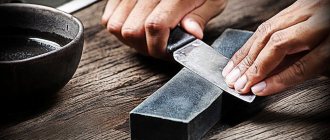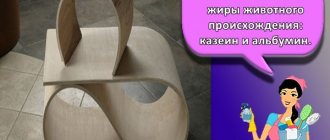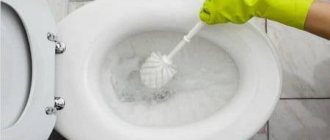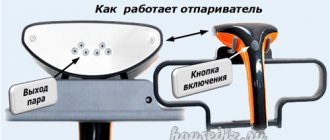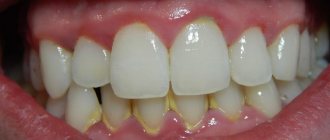To straighten the blade using the express method, cooks use musats - devices in the form of rods with an abrasive coating. Unlike other sharpening tools, knife polish does not remove large chips from the cutting edge, but only smoothes and polishes them. This is especially true for high-quality knives that have the ability to hold an edge for a long time. In this case, sharpening musat will help extend the life of the blade, maintaining its sharpness at the proper level. This rod can be used to sharpen the blade frequently without fear of premature wear.
What is knife polish
There are many different sharpening tools. These are special stones and other mechanical devices, as well as knife sharpeners powered by electricity. However, among this variety, an increasing number of people choose musats. Why are these tools so popular, and what are they?
Musat for sharpening knives is a special rod made from a sharpening base that is attached to the handle. Such instruments differ mainly in the degree of softness of the material. This indicator determines what the blade will become after using the musat: smooth or rough.
The advantage of musats is that their surface is magnetized. Thanks to this, after sharpening there will be no metal crumbs left in your kitchen; they will “stick” to the tool. To remove them, just wipe the grease with a damp cloth.
Recommendations for selection
According to professionals, the best ones are those with a polished working surface, on which you can see your own reflection:
- The magnetized tip of the product makes work easier. It helps to quickly remove metal dust deposited on the surface of the knife.
- To avoid injury to your fingers during operation, there must be a special guard between the rod and the handle.
- Ceramic musats are considered the most durable. They sharpen knives perfectly, removing a minimal layer of metal. The disadvantage of these products is their high fragility. After falling or hitting the surface, a crack or chip may appear.
When choosing musat, you need to take into account the grade of steel from which the blade is made, as well as its hardness. Now you know what musat is and why it is needed in everyday life.
There must be a guard for safety
Choose a magnetized tip
The best is ceramics
Types of musats
Ceramic grinding stone is excellent for sharpening large and wide blades.
It is very important to choose the right tool to ensure the best effect from its use. To do this, first of all you need to pay attention to its purpose. There are such musats:
- for grinding a blade that has already been sharpened;
- for initial sharpening of knife edges.
It is also worth deciding on the material of the musat, which is most often “diamond” or ceramic.
The first type of nuts is made of hard chrome-plated steel, which is then coated with “diamond” sand. Sharpening with the help of such devices occurs very quickly. For excellent results, you just need to run the rod once along each side of the blade.
“Diamond” musats have many advantages.
In addition, a distinctive feature of “diamond” tools is their oval shape. It eliminates the possibility of indentations forming on the tip. Even if you accidentally press the nut too hard in one place, there will be no unwanted nicks or grooves left there. At the same time, the sharpening rod made of “diamond” steel is quite rough to “bring back to life” even the most dull blade. After treating the edge with “diamond” musat, it remains sharp and smooth for a long time.
With all its advantages, this kitchen appliance is also very easy to store. It does not require special care. And in order for the musat to last longer, it is enough to follow only two rules: do not put it in the same drawer with other hard objects and wash it by hand, and not in the dishwasher.
A ceramic rod is also used for sharpening and final grinding of cutting surfaces. Such models come in round or oval shape. Musat made from this material perfectly sharpens large and wide blades. It is even suitable for the “cleaver” used to cut meat. With its help, you can make a heavily worn knife sharper, and it does an excellent job of polishing the blade.
Choosing a sharpener depending on the type of kitchen knife
A simple mechanical sharpener is suitable for sharpening 1-2 kitchen knives and pen cutting tools. If you collect Japanese blades, choose water stones. However, working with them requires skill. Therefore, to save time and effort, give preference to a sharpening machine.
Restaurateurs and chefs use grinders and electric sharpeners to keep dozens of different knives perfectly sharp.
To ensure that the sharpener not only makes the knife sharp, but also does not spoil it, choose a product based on the following parameters:
- Product type. Sharpeners for sharpening create an edge, devices for straightening create an angle on it.
- Type of processing. A sharpener can be mechanical or electric, and each group also has varieties.
- Sharpening angle. It is advisable that the sharpener provide for setting the angle depending on the type of knife. In this case it will be universal.
- Size. Any sharpener is suitable for the home kitchen, but pocket models are indispensable outdoors or on the road.
- Material. If you decide to purchase a whetstone, choose only a diamond product. For ceramics, you need to use similar sharpeners.
How to properly sharpen knives with musat
Before we talk about the rules for using this tool, it should be noted that musats are intended only for knives with a smooth blade. They cannot be used if the cutting surface is wavy or jagged.
When sharpening a knife with musat, the blade does not become thinner, but only straightens. This is its main difference from other sharpening devices. This feature allows you to use the grinder before each cooking, since even frequent sharpening will not affect the durability of the blade.
How to sharpen knives with musat? Remember that a good effect from using musat is achieved only if you use it correctly. Follow this sequence of actions:
- Place the end of the tool on a non-slip surface. A towel laid out on the kitchen table is best suited for this.
- During sharpening, hold the knife blade at an angle of 200.
- Run the cutting surface over the musat several times. First from bottom to top, and then forward and backward.
- Repeat the same steps on the other side of the blade.
It is important not to press too hard on the blade while sharpening, otherwise it may gouge.
How many times should you run a knife along the shaft of the musat to ensure that the blade becomes optimally sharp? If you are using a diamond tool, once on each side is enough. And when using a ceramic rod, you need to repeat these movements 3-6 times.
How to choose the optimal sharpening angle
The main thing in sharpening a knife is maintaining the correct angle of inclination between the sharpening tool and the blade. The smaller the angle of inclination, the sharper the knife blade; at a larger angle, its resistance to dullness increases.
When choosing a sharpening angle for a kitchen knife, you should consider what you will be doing with it:
- If it is a cutlery, it should not leave gouged lines on the utensils. In this case, the angle ranges from 55-60°.
- Chef's tools are usually sharp at 25-30°. But if we are talking about thick, heavy cutters, then 50° is optimal for them.
- Ordinary kitchen knives are not sharpened every day, they do not cut for a long time, so an angle of 30-35° is suitable for them.
The sharpest knives are blades with a sharpening angle of 50°. Some brands of such products can cut through nails. When sharpening a knife, the angle can be varied at your discretion within this range.
Features of sharpening knives made of different materials
Steel blades require tools with abrasives that are harder than the steel of the knife itself. Ceramic, diamond chips, carbides or Arkansas stone are suitable. Only diamond-coated abrasives are suitable for ceramic knives. This is because ceramics is a fragile material that can break if handled incorrectly.
A Damascus steel knife cannot be sharpened on a diamond whetstone, as the blade may crumble. The sharpening process is very long, so it is better to leave it to a master. But knives with a wavy edge are not sharpened at all, since it will not be possible to return the saw blade to its original properties. It's easier to sharpen it to a regular one.
Dressing a knife with musat
To straighten knives you will need some grinding cloth and a non-slip surface.
Musat can be useful not only for sharpening blades, but also for straightening them. How to do it right? There are certain rules for how to sharpen a knife with musat:
- as with sharpening, place the grinder on a non-slip surface (a towel or cutting board is suitable as a “lining”);
- tilt the musat to the left 20–25 degrees;
- place the tip of the knife on the right at the very beginning of the rod and move it from the base to the tip, directing the movement downward;
- do the same with the other side of the slicing device, tilting the musat to the right.
These actions are performed until the knife blade acquires the desired sharpness.
How to use
Using musat is not difficult. It is recommended to follow certain rules when sharpening blades. There are 2 main ways:
- Aweigh;
- with support.
The simplest option is to process the edges of the blades with support. In this case, the algorithm of actions is as follows:
- install the musat vertically - the handle is located at the top, the rod rests against a horizontal surface;
- holding a knife in the other hand, position it with the blade down so that the base of the blade coincides with the base of the tool shaft;
- make movements from top to bottom at an angle of 15°.
It is somewhat more difficult to carry out this process while in weight, but professionals use this method:
- Hold the musat by the handle in a horizontal position parallel to the floor or table. It can be installed perpendicular to the body “away from you” or also parallel.
- In the first case, sharpening is carried out from the base of the musat to the edge at an angle of 15°, in the second - on the contrary, from the end to the base.
When done correctly, the hand holding the knife is pulled back during sharpening, and in order for the blade to completely pass along the shaft at this time, you need to work only with the brush. Upon completion of the process, all instruments are thoroughly washed. You can check the quality of a sharpened blade in different ways. For example, cutting paper or a tomato.
How can you tell if a knife is sharp enough?
After sharpening, you must check whether the blade is sharpened well. To do this, you can use one of these methods:
- Select a strand of hair at the back of your head and press the knife against it at a right angle. Swipe through hair from top to bottom without making sudden movements. If the blade is still dull, it will slip off easily, whereas a sharpened point will stick.
- Take a newspaper or sheet of paper and hold it suspended. In this position, try cutting the sheets: if you succeed, the sharpened knife is already quite sharp.
For many cooks, musat has become an indispensable item in the kitchen. This is due to the fact that it is easy to use, it does not damage knife blades and lasts a very long time if used correctly.
Blade Sharpness Determination
You can run your finger along the cutting edge of the knife, but it is not recommended to do this along the knife. Move your finger across the blade, it will be difficult at first, but after getting used to it you will quickly determine the sharpness of the product. But there are methods that are less dangerous, let’s consider them:
- Paper. Holding the leaf in the air, you should try to cut a piece from it. The sheet should not wrinkle. The better the blade is sharpened, the thinner the strip will be cut.
- Tomatoes. A sharp blade will be able to cut a tomato without crushing its skin.
- Hair . Be careful when using this method. Bring the blade to the skin and try to cut it against the growth of the hair. A sharp blade will do this without any problems.
- Nail . You can also check by applying the blade to the nail. If the cutting edge is dull, the blade will slip. If the knife is sharp, it will slightly catch the nail and leave a small mark.
Types of musats by material
The material used to make the musat also plays a significant role in the purpose of the product. The most popular purpose should be recognized: grinding the blade and straightening the cutting part. But there are musats that can cope with the initial sharpening of the blade.
A blade with a score of less than 50 will eat musat instantly, and a blade with scores of more than 60 will be difficult to sharpen. But having chosen the right material for the product, sharpening or editing will take place accordingly.
Metal
Metal.
Metal musat for sharpening knives must be made from hard steel.
Which contain large amounts of chromium and vanadium. The surface is made smooth, and hardness is an advantage of such a product.
It is used for straightening the cutting edge and polishing the blade. Often, during their manufacture, steel is magnetized. When sharpening a knife, the chips do not fly in all directions, but remain on the grinder. The type of grain size of the product is selected depending on the degree of wear of the blade.
Diamond
Diamond product.
Serious and, according to professionals, the best musat for sharpening knives. Differs in speed in work.
Designed to edit and polish the blade. It is not recommended for them to sharpen knives. The product is made from chromium-rich steel.
This gives the musat excellent hardness. The surface is covered with fine grains of diamond chips. The oval shape of the product will prevent the appearance of jagged edges on the blade during awkward movement. This musat will cope with a task of any complexity.
It is recommended to store the product strictly separately from metal objects. It should be washed under running water. If you follow the rules of care and storage, the musat will last for many years.
Ceramic
Ceramics.
The ceramic product is similar in nature to the diamond version. Spraying consists of ceramic chips.
Musats are made with varying degrees of abrasiveness. Coarse-grained coating is intended for sharpening knives.
This is the key point of ceramic musat. Knives of low hardness can easily be sharpened for initial sharpening of the cutting edge. By maintaining the required angle and then bringing the blade to a fine grain, you will get an excellent sharp-nosed assistant.
Mixed option
Vintage station wagon.
Combining materials for sharpening or straightening a cutting edge gives the product versatility.
By spraying various abrasives, musat will be able to solve two problems. And a tetrahedral one means four at once.
This versatility of the product is useful for home use. Don’t be mistaken about the purpose of each surface; it’s possible to damage the cutting part of the blade in just a few movements.
What is
Musat is a tool for sharpening a knife blade. It consists of a wooden or plastic handle and a metal or ceramic rod. Thanks to the device, you can easily maintain the sharpness of the blade. When sharpening knives with musat, no metal shavings are formed.
This tool is widely used in various fields. In this regard, it is divided into several types:
- domestic;
- universal;
- professional.
At home, household musats are usually used. The length of their working surface is 180–230 mm, which is quite enough for processing kitchen knives. This category of sharpening is considered to be the most budget-friendly.
To straighten blades made of harder metal, universal or professional grinders are used. They differ from household ones in their high cost and the presence of a long rod:
- universal - 260–290 mm;
- professional - 260–360 mm.
How to use
To get the most out of a tool, you need to know how to use it. The work must be performed in a certain technological sequence:
- place a towel on a flat surface;
- the tool is installed in a vertical position. Its tip should touch a non-slip surface;
- hold the knife with your free hand, maintaining an angle of 15-20 degrees;
- the movement of the cutter should start from the top, slowly moving down;
- the direction is maintained: first from oneself, then towards oneself;
- After sharpening one surface, the operation is repeated on the opposite side. You need to start from the base and end with the tip of the blade.
4-7 movements on the surface of the musat are enough to return the cutting edge to its original sharpness. If you use a diamond tool, it is enough to stroke the blade once on each side.
Aweigh
This type of knife sharpening is usually performed by professional craftsmen. Behind the apparent ease of the operation, there is enormous experience and training. To sharpen a knife while hanging, it is necessary to maintain an angle of inclination of the tool of 20 degrees relative to the working blade. Every movement must be very fast. However, no distortion or excessive haste is allowed. Smooth movement with simultaneous speed comes with experience.
To sharpen by weight, you must follow a certain sequence:
- the knife in the hand is placed with the blade down on the lower part of the musat. The cutting part of the cutter should be in the “away” position;
- the blade is passed along the surface of the musat towards itself, maintaining the correct angle;
- movements should be carried out quickly and easily, without pressure. This method is considered dangerous, as the blade can jump off and injure a person;
- several transactions are made, then the blade is turned over, the operation is repeated.
In order for the knife to freely cut a sheet of paper, you need to move the blade along the equipment about 5-6 times. This amount only applies to cutters that are adjusted every day.
To sharpen a very dull knife, the number of operations increases several times. To sharpen a new device, you need to perform the operation with pressure. The movement is performed in the direction “from yourself”. The tilt angle is increased to 30 degrees.
Hold the sharpener in your left hand and the knife in your right
Hold at an angle of 20 degrees
We lead towards the handle
Repeat 6-8 times
With support
This method is much simpler. Even a person with no sharpening experience can use it. In this case, the device rests on a hard surface, such as a board. This helps to work at the correct angle. The sequence of actions is similar to that described above, but there are some differences:
- The instrument rests strictly vertically on the table.
- The required angle is set: 20-25 degrees.
- The blade moves along the musat only perpendicularly.
- The base of the equipment, as well as the knife, should touch in the upper position. The tip touches at the very bottom.
The movements are performed starting from the top, gradually descending. To move upward, the blade must be removed from the tool.
